What to Expect After Your Roof Replacement
Whether it's due to natural disasters, severe weather, or simply the passage of time, the day will come when your roof needs replacement. Roof...
In recent years, metal roof-overs have gained popularity as an alternative roofing solution for homeowners looking to upgrade their roofs. This innovative method involves installing a new metal roof directly over existing shingles, providing several advantages over traditional roof replacement. If you're considering a roof replacement, this cost-effective and environmentally-friendly option might be the ideal fit for your home.
In this blog, we'll explore:
Let’s get into it!
Before we jump into discussing metal roof overs, you should know about the different kinds of metal roofs that you’ll have available to you through the process, those being standing seam, and exposed fastener.
A standing seam metal roof is a sophisticated roofing system comprising vertical metal panels that interlock at the seams, concealing the fasteners beneath the metal surface. These roofs commonly utilize high-quality steel substrates, typically coated with zinc or Galvalume®, a zinc and aluminum alloy, to enhance durability.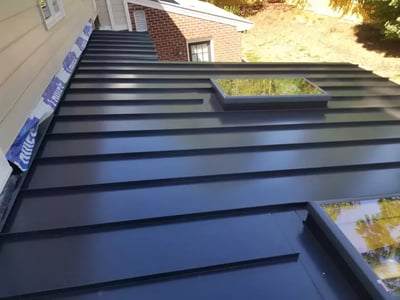
Standing seam roofs are renowned for their premium quality and find application in both residential and commercial settings. Their exceptional weather resistance makes them a preferred choice for homes in coastal and rural areas, while the clean and modern aesthetic is gaining popularity as an accent piece in suburban regions.
On the other hand, an exposed-fastener roof, also known as a screw-down panel roof, is a simpler alternative. In this roofing system, metal panels are secured to the roof in an overlapping pattern, similar to the installation of asphalt shingles. The materials used for screw-down panels are similar, and these panels are readily available compared to those used in standing seam roofs. You can even find these panels at stores like Home Depot or Lowe's for purchase.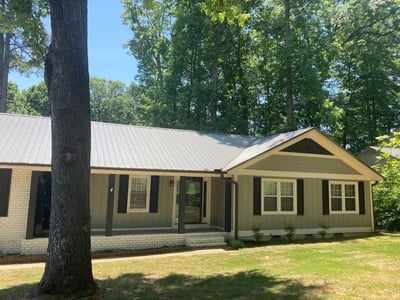
Exposed-fastener roofs are commonly employed over uninhabited and unheated spaces, such as barns, sheds, or carports. However, they are less prevalent in heated spaces or residential buildings due to a specific concern related to metal's expansion and contraction with temperature changes. In the next section, we'll delve into these considerations in more detail.
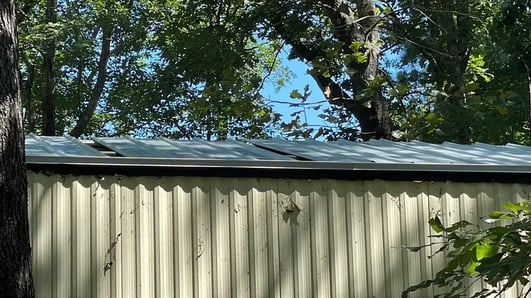
A metal roof-over is a roofing method where a new metal roof is installed over the existing shingles. Unlike the traditional approach of tearing off the old shingles before installing a new roof, a roof-over eliminates the need for shingle removal. This process not only reduces waste but also minimizes the disruption during installation, allowing for a faster and more efficient roofing project. The metal roof is securely fastened to the existing structure, providing a durable and long-lasting roofing solution.
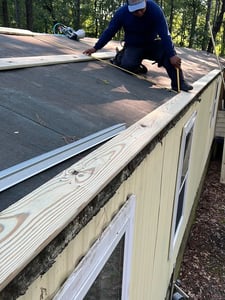
The installation of a metal roof-over requires careful preparation and attention to detail. Before beginning the process, a thorough inspection of the existing shingles is essential. Any damaged or deteriorated shingles should be repaired or replaced to ensure a stable base for the metal roof. Next, the metal panels or shingles are installed directly over the shingles using appropriate fasteners and techniques. Proper ventilation is also crucial in this process to prevent moisture buildup and enhance the overall performance of the new roof.
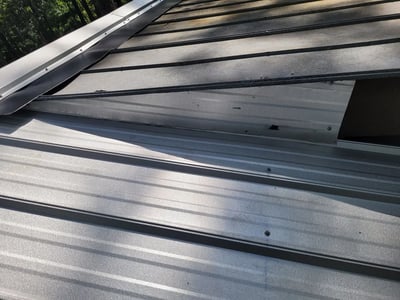
Opting for a metal roof-over offers numerous benefits for homeowners. One of the most significant advantages is the exceptional longevity of metal roofs. They are highly durable, resistant to extreme weather conditions, and can last for several decades with minimal maintenance. Additionally, metal roofs are energy-efficient, reflecting sunlight and reducing heat absorption, which can lead to lower energy costs. Moreover, metal roofing materials come in a variety of styles and colors, providing homeowners with aesthetic options to enhance their home's curb appeal and potentially increase property value.
While metal roof-overs offer many benefits, there are situations when this method may not be the best choice. It's crucial to evaluate the condition of the existing shingles and roof structure before proceeding with a roof-over. If the shingles are severely damaged, warped, or there are multiple layers of shingles already in place, a complete tear-off may be necessary to ensure a stable and long-lasting roofing system. Additionally, certain structural concerns or building code requirements may make a metal roof-over unfeasible or unsafe.
Before deciding on a metal roof-over, there are several important considerations and precautions for homeowners to keep in mind. In some cases, building codes and regulations may not permit the installation of metal roofs over existing shingles. This restriction is primarily based on safety and structural considerations. Building codes are put in place to ensure that all constructions meet certain safety standards, and roofing is no exception.
One significant concern with installing metal roofs over shingles is the added weight. Metal roofing materials can be heavier than traditional asphalt shingles, and when combined with the weight of the existing shingles, it can put excessive stress on the roof's structure. This can compromise the integrity of the roof and potentially lead to structural issues over time.
Another aspect that building codes take into account is the proper ventilation of the roofing system. Proper ventilation is crucial to prevent moisture buildup and condensation, which can cause mold and rotting. Installing a metal roof directly over shingles without addressing ventilation concerns may lead to inadequate airflow, promoting the accumulation of moisture within the roofing system.
Moreover, building codes are designed to ensure that roofing installations meet certain quality standards and minimize potential hazards. For instance, when installing a metal roof over shingles, the existing shingles may have worn out or damaged areas. Installing new metal panels over compromised materials may not provide a stable foundation and could lead to issues like leaks or even complete failure of the roofing system.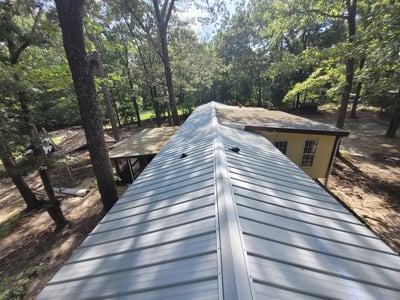
A metal roof-over offers a practical and eco-friendly alternative to traditional roof replacement. With its durability, energy efficiency, and potential for cost savings in the long run, this roofing method has become increasingly popular among homeowners. However, it's essential to carefully assess the condition of the existing shingles and consider any structural or code-related requirements before proceeding with a roof-over. By seeking professional guidance and understanding the specific needs of their home, homeowners can make an informed decision about whether a metal roof-over is the right choice for their roofing project. With this option in mind, homeowners can confidently embark on their journey to a secure and long-lasting roofing solution.
On Tops Roofing has been helping homeowners make roofing decisions since 1991. Whatever your roof requires, We’re on it!
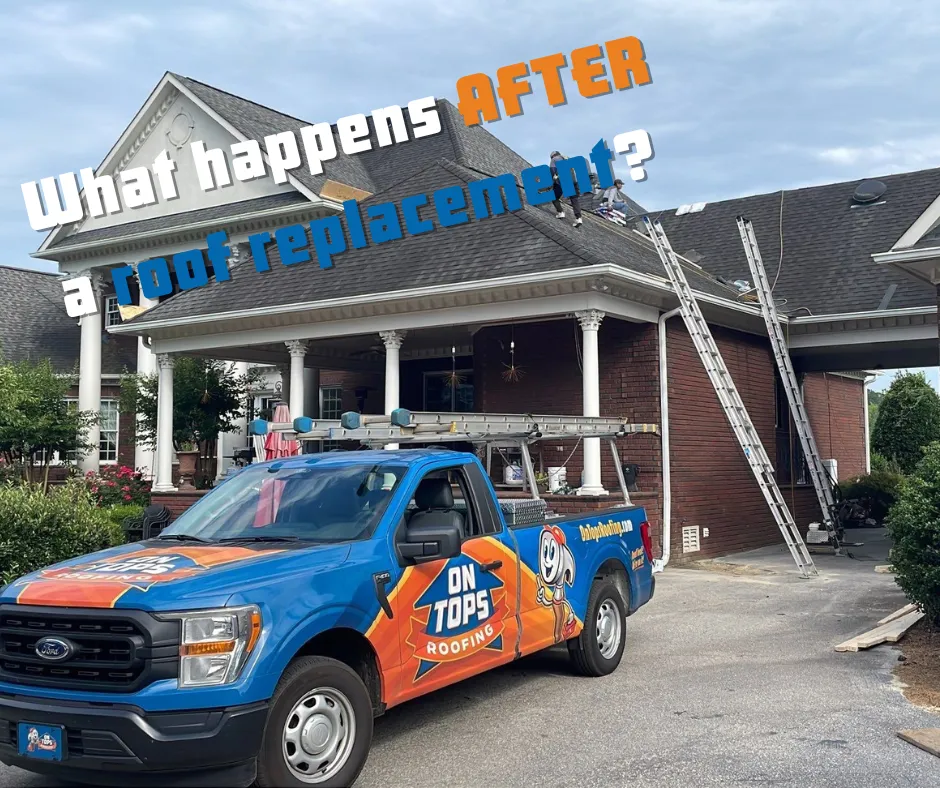
Whether it's due to natural disasters, severe weather, or simply the passage of time, the day will come when your roof needs replacement. Roof...
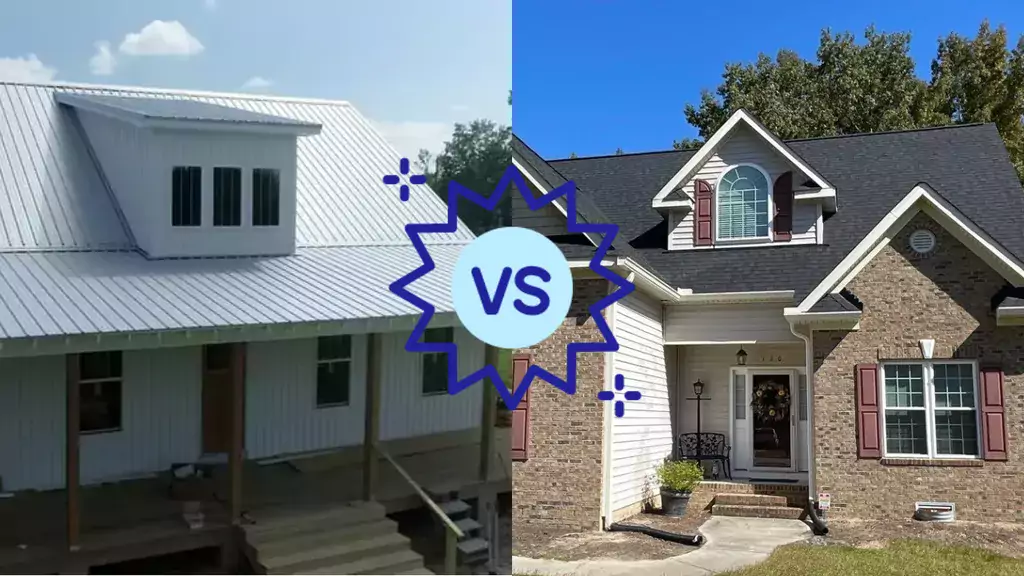
When you’re in the process of getting a new roof, you’ll start to understand how large of a project it actually is. Thankfully, if you get it done...
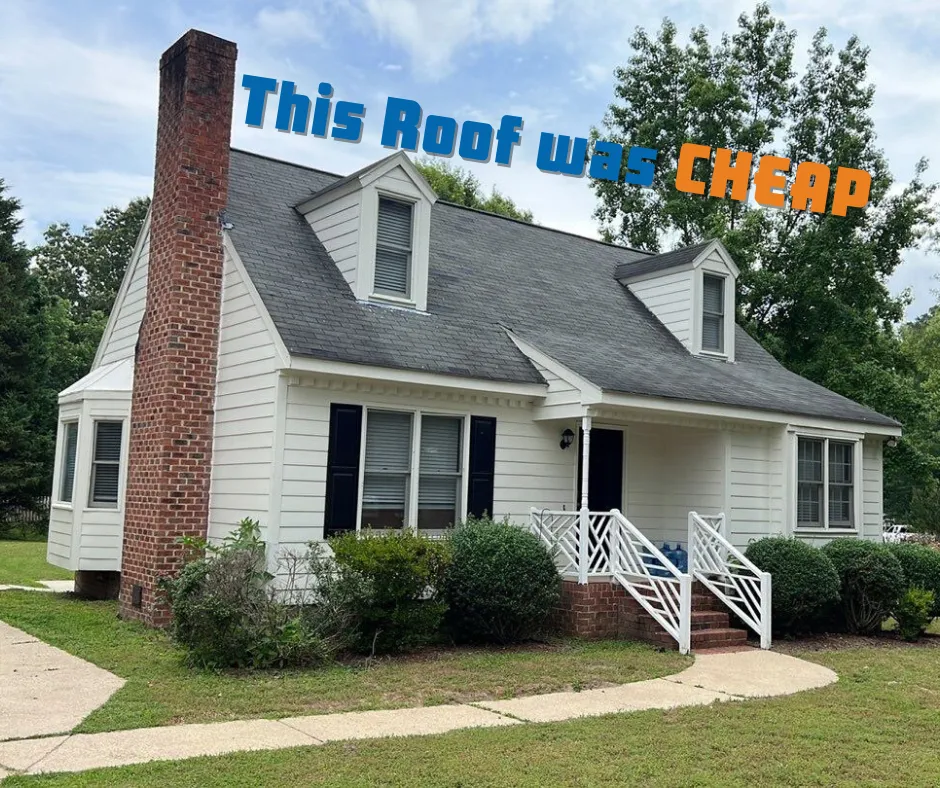
Are you in need of roof repair or replacement? Contemplating a seemingly "budget-friendly" proposal from a roofing contractor? It's imperative to...